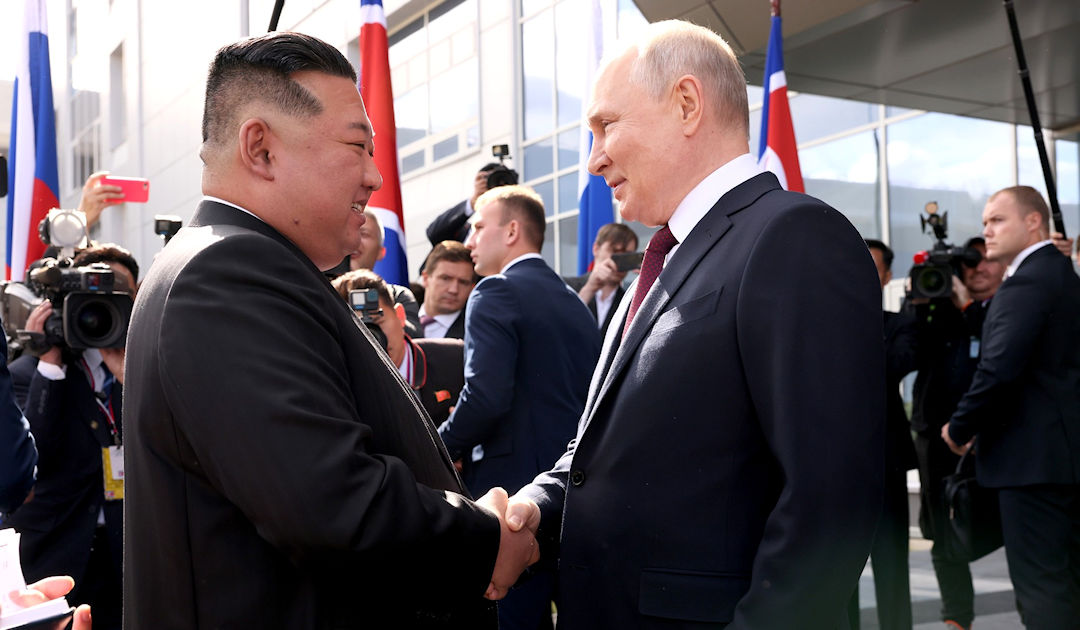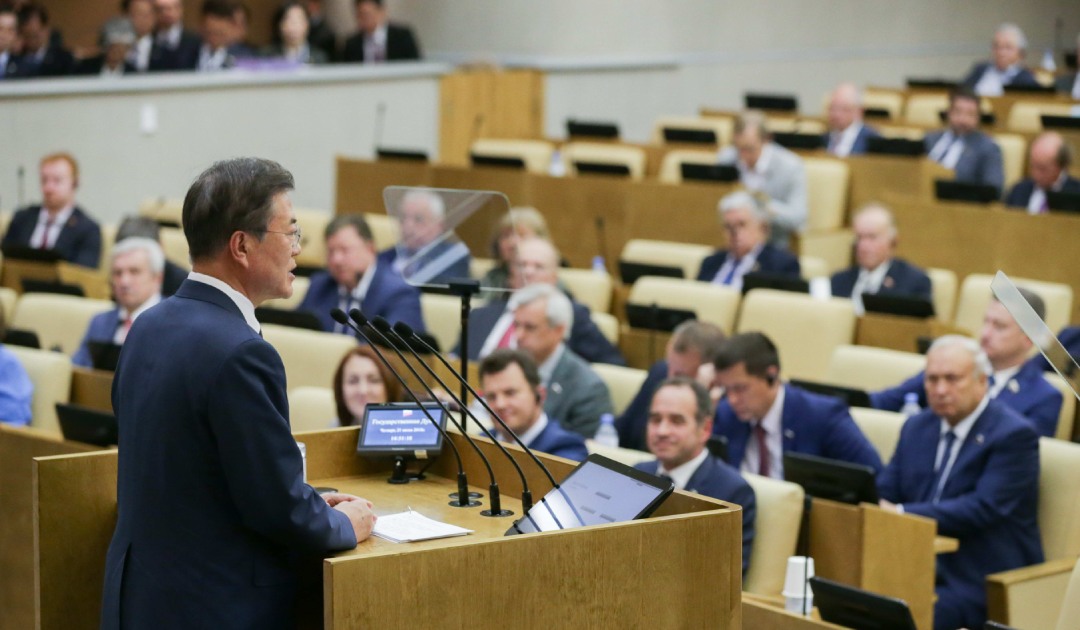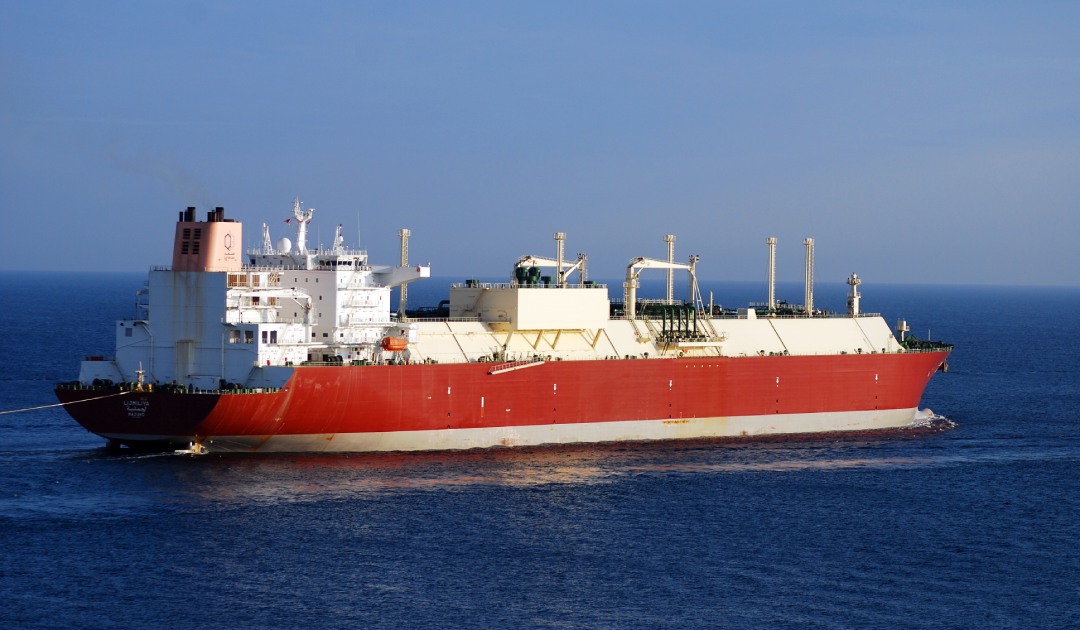
Three key Arctic policy areas of South Korea’s have been affected by Russia’s strengthened relationship with North Korea. Read an analysis of each of them below.
In February of this year, Russian president Vladimir Putin sent North Korean leader Kim Jong Un an elaborate present. He gave Kim Jong Un a limousine of the Russian luxury brand Aurus Senat that had originally been presented to him during a summit in Moscow in September.
The present was a symbol of a friendly relationship between Russia and North Korea; a relationship that has been increasingly strengthened following Russia’s invasion of eastern Ukraine and its subsequent ostracization by the West.
This friendly relationship is a cause for worry in North Korea’s neighbor to the south, South Korea, and not least in the offices where the country’s Arctic strategy is planned. Because, for three distinct reasons, Russia is key for this strategy to be successful. So much so, that the strategy is now being changed drastically.
“The biggest catalysor for this change is Russia’s revitalized ties to North Korea. The fact that Russia is protecting them from international sanctions means that South Korea has had to make changes that they were initially reluctant to make,” Nima Khorrami, Research Associate at The Arctic Institute, told Polar Journal AG.
In an analysis of South Korea’s current dilemmas in the Arctic, Nima Khorrami identified three key Arctic policy areas that have been affected by South Korea and Russia’s deteriorating relationship. Read his take on how these policy areas have changed in recent months and years here.

1. The Northern Sea Route
The first and for South Korea, perhaps, most important area is geographical. Opening the so-called Northern Sea Route has long been of great interest to the South Koreans as it would drastically reduce the time and, in turn, the price of shipping goods to Europe.
However, the shipping route that would run through the Arctic Ocean along the coasts of Siberia is virtually impossible to make viable without collaboration from the Russians.
“Russia is the only Arctic state which is very serious about developing a maritime route through the Arctic. If you compare the Russian plan to, say, the Canadian plan or the American plan, they have a very clear vision: they want the Northern Sea Route to be operational,” Nima Khorrami said.
“This has been a boon to South Korea who would be able to receive and sell more goods to and from Europe,” he said.
So far, the route is not operational, but, until recently, the South Koreans were collaborating with the Russians on experiments that would make it so.
These included the construction of GPS systems that took advantage of South Korea’s semiconductor industry and the construction of icebreakers that took advantage of its shipbuilding capabilities. Moreover, there were plans to build autonomous ships that would sail the freezing and perilous Arctic waters more cost-effectively.
But now these experiments have come to a halt. Without terminating them yet, South Korean industrial giants Samsung and Daewoo have put a pause on their contracts. And, according to Nima Khorrami, no one is sure what will happen next.
“It is essentially the ‘wait and see approach’. But the question is how long this can last,” he said.

2. Natural gas from Yamal Peninsula
South Korea’s second interest in the Russian Arctic is in liquified natural gas, so-called LNG. For a while, the South Koreans have had their eyes on the Russian gas deposits, particularly on the Arctic peninsula of Yamal.
Here, South Korea showed an interest in supporting the development of LNG extraction, both with technical know-how and with icebreaking LNG tankers.
“The reason South Korea was so interested in this project, and in Russian gas in general, was to diversify their energy sources. They wanted to be less reliant on Middle Eastern oil,” Nima Khorrami explained.
For Russia, too, the interest in selling more oil and gas to Asian countries increased since they were hit by Western sanctions. This, Nima Khorrami believes, was an important reason that South Korea recently, after much hesitation, had to give up their Russian LNG projects.
“There was clearly international diplomatic pressure on South Korea to give up their reliance on Russian oil and gas. What they got in return, I am not sure, but it could be a more open collaboration on technologies like semiconductors which are high on the agenda at the moment,” Nima Khorrami said.

3. Shipbuilding and LNG tankers
The third South Korean interest in the Arctic concerns the construction of the ships that would sail the Arctic Ocean. South Korea has long been a world-leader in ship building, producing high-quality vessels at a lower cost than Western counterparts.
The construction of LNG tankers in particular has become a South Korean area of expertise.
Since 1994, the country built more than 500 LNG carriers, about three out of four of the ship type that exist in the world today. And by strengthening the hull of these LNG tankers, their expertise was carried over to the construction of LNG tankers that would sail Arctic waters.
“Since South Korea is dependent on other countries for energy, it has become very good at building LNG tankers. The thinking is if you cannot be a supplier of energy, or an energy hub like Turkey is trying, you can become an enabler. With its LNG tankers South Korea enables other countries to take advantage of its energy potential,” Nima Khorrami explained.
And because of this strategy, until Russia’s recent North Korean flirtations, they were openly sharing their knowledge of building these tankers with Russia, and a collaboration that would develop a Russian-South Korean LNG partnership was well underway. This, however, is no longer the case.
“The first thing that went out the window when South Korea decided to apply sanctions to Russia was this transfer of knowledge, but they carried on with the contractual commitments of producing the tankers,” Nima Khorrami said.
“But then, when the sanctions hit, South Korea had a good excuse for halting the construction too. They simply said: ‘we are not ending the contracts, but you cannot pay us because of the financial sanctions,” he said.
The shipbuilding collaboration is therefore, just like the Northern Sea Route question, in a ‘wait and see’-position, Nima Khorrami assessed.

The future for Arctic South Korea
In spite of these three challenges for South Korea, Nima Khorrami is hopeful about its Arctic future. When one door closes, others open, and for South Korea those doors may be in the Nordics.
For instance, Nima Khorrami foresees a strengthening of collaborations with countries like Finland and Sweden, who recently joined NATO. Like South Korean companies, Swedish companies like Saab, a weapon manufacturer, are facing the challenge of making sure that their products are NATO compatible.
“Unlike the LNG partnership with Russia, this collaboration will be a two-way transfer of knowledge. They will be able to learn from each other,” he said.
“So, for South Korea I don’t really think the deteriorating relationship with Russia is a loss. It is more like a temporary headache as new partnerships will need to get off the ground.”
“The only real challenge I see is that no other countries are as enthusiastic as Russia about the Northern Sea Route,” Nima Khorrami said.
Ole Ellekrog, Polar Journal AG
More on the topic:





